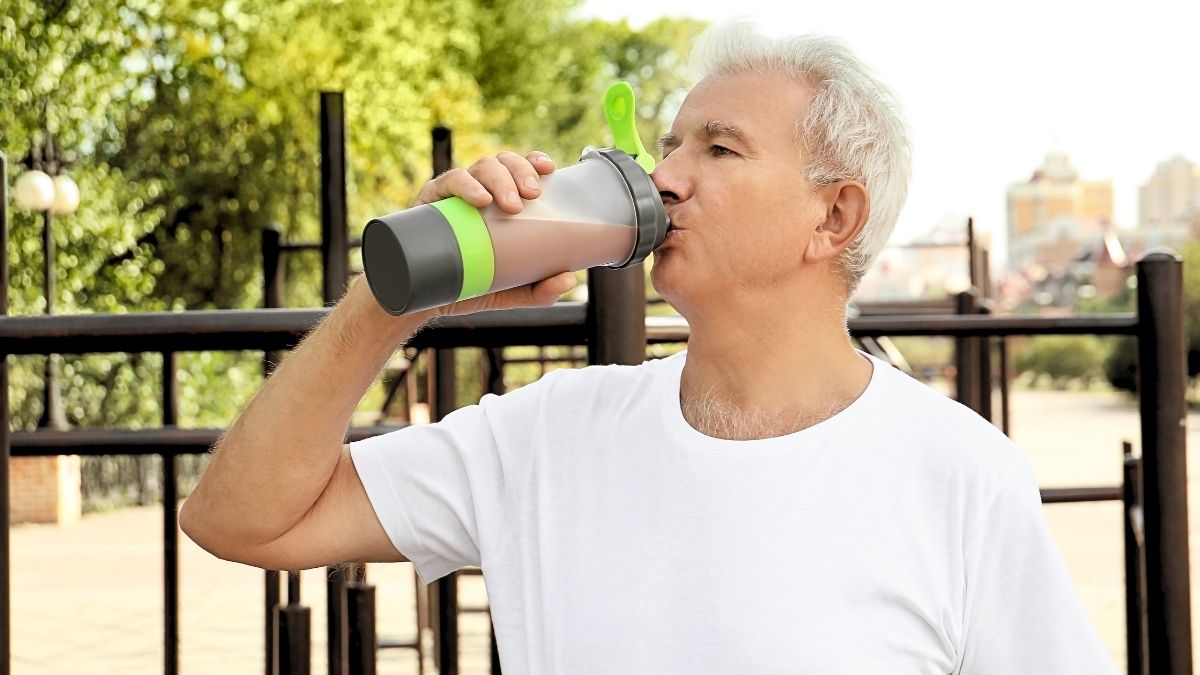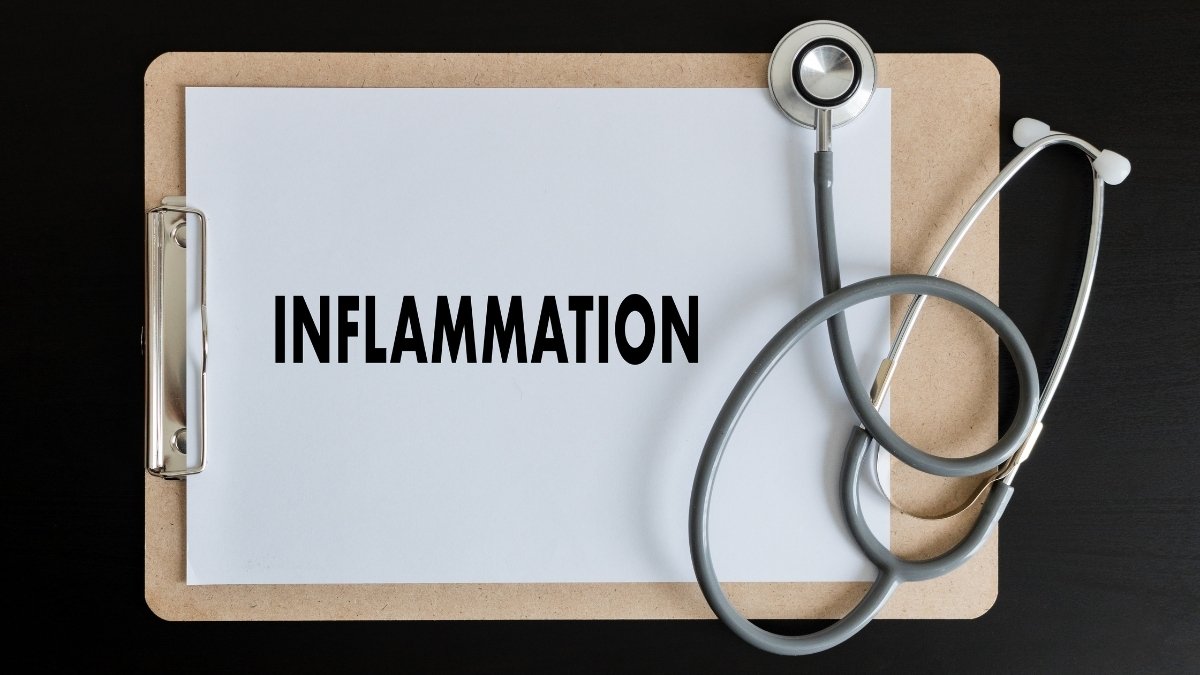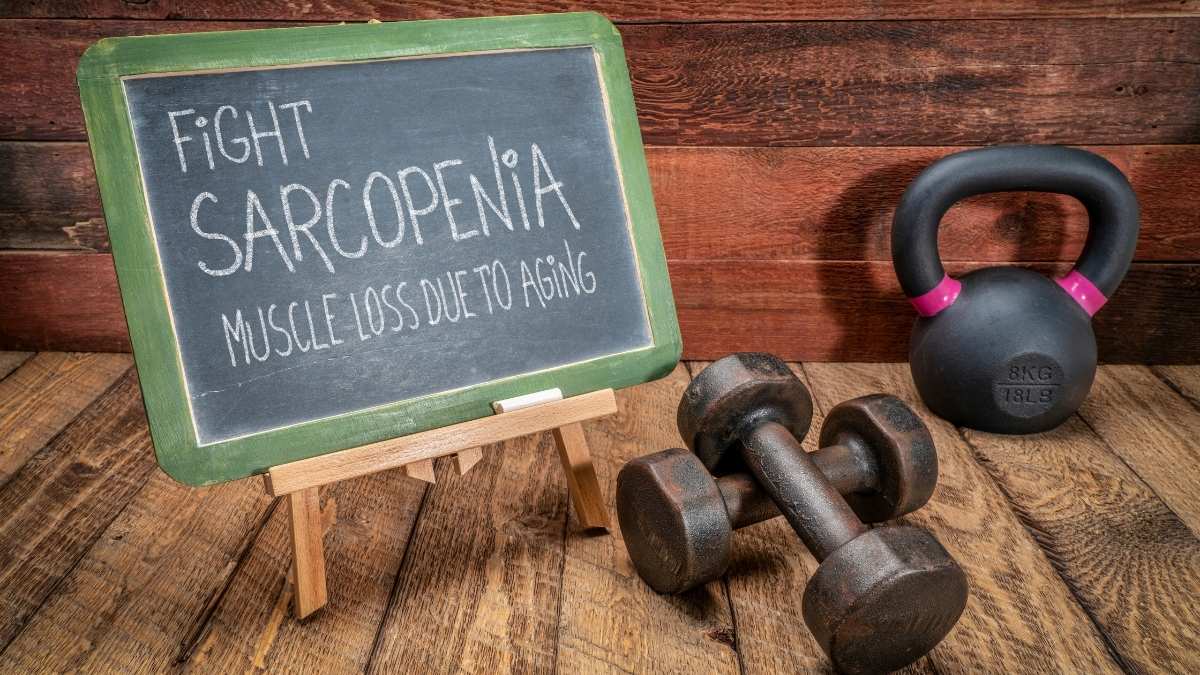The Top #3 Reason Your Muscles Won’t Grow After 50 – And How to Reverse It Today

Watching your strength fade after 50 feels frustrating, especially when you’re doing everything “right” but seeing minimal results. You hit the gym regularly, eat well, and get decent sleep, yet your muscles seem stuck in neutral while younger people gain strength effortlessly.
This isn’t your imagination or lack of willpower—your body faces unique challenges after 50 that require specific solutions.

The good news? Once you understand why traditional muscle-building approaches fail after 50, you can implement targeted strategies that work with your changing physiology.
Thousands of people have successfully built impressive muscle mass well into their 60s, 70s, and beyond by addressing three critical roadblocks and applying five evidence-based techniques. Your age isn’t a barrier to strength—it’s simply a different starting point that requires a smarter approach.
3 REASONS MUSCLES WON’T GROW AFTER 50
1. Anabolic Resistance – Your Body’s Protein Processing Problem
After 50, your muscles become stubborn about using protein. Think of it like a clogged drain that won’t accept water properly. Your body needs more protein stimulus to trigger the same muscle-building response it once did easily.

This resistance happens because aging cells lose their sensitivity to amino acids. Muscle protein synthesis drops by 30-50% compared to younger adults. Even when you eat enough protein, less of it actually gets converted into new muscle tissue.
Your digestive system also produces fewer enzymes needed to break down protein efficiently. The result? You’re working harder but seeing fewer gains despite your best efforts.
4 Tips to Combat Anabolic Resistance:
- Consume 25-30 grams of high-quality protein per meal instead of the standard 15-20 grams
- Space protein intake every 3-4 hours throughout the day to maintain steady amino acid levels
- Choose leucine-rich proteins like whey, eggs, or lean beef to maximize muscle protein synthesis
- Add digestive enzymes with meals to improve protein breakdown and absorption
2. Hormonal Decline – The Growth Signal Shutdown
Your body’s muscle-building messengers start going silent after 50. Testosterone drops 1-2% yearly after age 30, creating a significant deficit by your fifth decade. Growth hormone production plummets during sleep, reducing overnight muscle repair and growth.

IGF-1 levels decline, weakening the cellular signals that tell muscles to grow and strengthen. These hormonal changes don’t just affect muscle building. They also slow recovery between workouts, making it harder to train consistently.
Sleep quality deteriorates, further disrupting hormone production cycles. Without these chemical messengers working properly, even excellent training and nutrition yield disappointing results.
4 Tips to Support Natural Hormone Production:
- Prioritize 7-9 hours of quality sleep to maximize growth hormone release during deep sleep phases
- Include compound exercises like squats and deadlifts that naturally boost testosterone production
- Maintain healthy body fat levels between 10-18% for men and 16-24% for women
- Manage stress through meditation or yoga to reduce cortisol that blocks muscle-building hormones
3. Inadequate Training Intensity – The “Safe” Exercise Trap
Many people over 50 fall into the comfort zone of easy workouts. Light weights and gentle movements feel safer but won’t stimulate new muscle growth. Your muscles adapt to whatever stress you place on them regularly.

Without progressive challenge, they maintain current strength but refuse to grow larger. Fear of injury keeps many adults using the same weights for months or years. This approach actually increases injury risk because muscles become weaker over time.
Muscle growth requires progressive overload, meaning gradually increasing weight, reps, or difficulty. Safe training doesn’t mean ineffective training when done with proper form and smart progression.
4 Tips to Train with Appropriate Intensity:
- Increase weight by 2.5-5 pounds when you can complete all sets with 2 reps left in reserve
- Focus on the last 3-5 reps of each set where muscles feel challenged but form stays solid
- Track your workouts to ensure weekly progression in either weight, reps, or total volume
- Use compound movements that work multiple muscle groups for maximum growth stimulus per exercise
THE 5 WAYS TO DEVELOP MUSCLE AFTER 50
1. Strategic Protein Timing and Quantity
Your protein strategy becomes crucial after 50 because your body processes it differently than before. Most adults need 1.2-1.6 grams per kilogram of body weight daily, which equals roughly 0.55-0.73 grams per pound. A 180-pound person should aim for 100-130 grams daily, spread throughout the day rather than loaded into one meal.

Timing matters as much as total amount since muscle protein synthesis peaks 1-3 hours after eating protein. Your aging muscles need consistent amino acid availability to overcome anabolic resistance.
Breakfast becomes especially important because you’ve fasted overnight, leaving muscles starved for building blocks. Evening protein intake supports overnight muscle repair when growth hormone levels naturally rise during deep sleep.
4 Tips for Optimal Protein Strategy:
- Eat 25-30 grams of protein within 2 hours after resistance training to maximize recovery
- Include protein at breakfast to kickstart muscle protein synthesis after overnight fasting
- Choose complete proteins like eggs, fish, or chicken that contain all essential amino acids
- Consume casein protein or Greek yogurt before bed to fuel overnight muscle repair
2. Progressive Resistance Training with Proper Load
Building muscle after 50 requires challenging your body beyond its comfort zone systematically. Your muscles need progressive overload to grow, meaning gradually increasing difficulty over time.

Compound movements like squats, deadlifts, and pull-ups work multiple muscle groups efficiently, giving you more results per exercise session. Training intensity becomes more important than volume as you age because recovery takes longer between sessions. Many adults make the mistake of lifting the same weights for months, wondering why they plateau.
Your body adapts to familiar stress levels within 6-8 weeks, requiring new challenges to continue growing. Smart progression prevents injury while ensuring continuous muscle development through controlled increases in weight or difficulty.
4 Tips for Effective Resistance Training:
- Focus on 6-12 repetitions per set using weights that challenge you in the final 2-3 reps
- Increase training load by 2.5-5% when you can complete all sets with good form easily
- Prioritize compound exercises that work large muscle groups over isolation movements
- Train each muscle group 2-3 times per week with at least 48 hours recovery between sessions
3. Recovery Optimization – Sleep and Stress Management
Recovery becomes your secret weapon for muscle growth after 50 because it takes longer than it used to. Sleep quality directly impacts growth hormone production, which peaks during deep sleep phases between 10 PM and 2 AM. Chronic stress elevates cortisol levels, which actively breaks down muscle tissue and blocks protein synthesis.

Your nervous system needs more time to recover between intense training sessions compared to younger adults. Poor sleep disrupts hunger hormones, making it harder to maintain proper nutrition for muscle building.
Stress management through meditation, yoga, or simple breathing exercises significantly improves recovery rates. Quality rest allows your muscles to adapt and grow stronger from the training stimulus you’ve provided.
4 Tips for Enhanced Recovery:
- Maintain consistent sleep and wake times to regulate growth hormone production naturally
- Create a cool, dark bedroom environment and avoid screens 1 hour before bedtime
- Practice 10-15 minutes of stress reduction techniques like deep breathing or meditation daily
- Schedule complete rest days between intense training sessions to allow full nervous system recovery
4. Nutrient Timing and Micronutrient Support
Strategic eating around workouts amplifies your muscle-building results significantly. Pre-workout nutrition provides energy for intense training while post-workout meals supply recovery materials when your muscles are most receptive.

Vitamin D deficiency affects up to 80% of adults over 50, directly impacting muscle strength and growth potential. Magnesium supports over 300 enzymatic reactions involved in protein synthesis and energy production. Zinc plays a crucial role in testosterone production and wound healing, both essential for muscle development.
B vitamins help convert food into energy and support red blood cell production for better oxygen delivery to working muscles. Timing these nutrients properly creates an environment where muscle growth can flourish naturally.
4 Tips for Smart Nutrient Timing:
- Eat a balanced meal containing carbs and protein 2-3 hours before intense training sessions
- Consume 20-25 grams of protein within 30 minutes after resistance training for optimal recovery
- Take 2000-4000 IU of vitamin D daily to support muscle function and hormone production
- Include magnesium-rich foods like spinach, almonds, or supplements to aid muscle contraction and recovery
5. Inflammation Control Through Lifestyle
Chronic inflammation acts like a brake on muscle growth, becoming more problematic as you age. Low-grade inflammation from poor diet, lack of sleep, or chronic stress interferes with muscle protein synthesis pathways. Your immune system becomes overactive with age, directing energy toward fighting phantom threats instead of building muscle tissue.

Processed foods, excess sugar, and trans fats fuel inflammatory responses that directly oppose your muscle-building goals. Anti-inflammatory foods like fatty fish, berries, and leafy greens help calm this internal fire.
Regular movement and stress management reduce inflammatory markers significantly within weeks of implementation. Managing inflammation creates an internal environment where muscle growth can occur efficiently and recovery happens faster than before.
4 Tips for Reducing Inflammation:
- Include omega-3 rich foods like salmon, walnuts, or flaxseeds in your diet 3-4 times weekly
- Eliminate processed foods, refined sugars, and trans fats that trigger inflammatory responses
- Add colorful vegetables and fruits to every meal for natural anti-inflammatory compounds
- Practice regular low-intensity activities like walking or swimming to reduce systemic inflammation naturally
The Science Behind Age-Related Muscle Loss (Sarcopenia)
Muscle loss accelerates dramatically after 50, affecting up to 50% of people by age 80. Your body loses 3-8% of muscle mass per decade after 30, with the rate doubling after 50.

Sarcopenia occurs when muscle protein breakdown exceeds protein synthesis, creating a negative balance over time.
Type II muscle fibers, responsible for strength and power, shrink faster than Type I endurance fibers. Motor neurons that control muscle contractions also decline, reducing coordination and strength even when muscle size remains stable.

Hormonal changes, reduced physical activity, and poor nutrition create a cascade effect that speeds muscle deterioration. Understanding these mechanisms empowers you to intervene early and reverse the process through targeted strategies.
Success Stories and Realistic Expectations
Building muscle after 50 takes patience but delivers remarkable results with consistent effort. Most people see noticeable strength gains within 4-6 weeks, while visible muscle growth appears after 8-12 weeks of proper training. A 55-year-old beginner might gain 5-10 pounds of muscle in their first year with dedicated resistance training. Advanced trainees can expect 2-4 pounds annually, which represents significant improvement at this life stage.

Women typically see 20-40% strength increases in their first six months, while men often achieve 30-50% improvements. Recovery takes 48-72 hours between intense sessions compared to 24-48 hours for younger adults. Realistic goals include regaining functional strength, improving bone density, and maintaining independence well into your later decades.
Creating Your Personal Action Plan
Start with a simple three-day resistance training schedule focusing on major muscle groups. Plan your protein intake around 1.2-1.6 grams per kilogram of body weight, spread across 4-5 meals daily. Schedule 7-9 hours of sleep nightly and establish consistent bedtime routines for optimal recovery. Track your workouts, noting weights used and repetitions completed to ensure progressive overload each week.

Begin with bodyweight exercises or light weights, increasing difficulty every 1-2 weeks as strength improves. Address inflammation through whole food nutrition and stress management techniques you can practice daily. Set measurable monthly goals like increasing squat weight by 10 pounds or adding 2 push-ups to your maximum. Review and adjust your plan every 4 weeks based on progress and how your body responds.
A Few Final Thoughts:
Building muscle after 50 isn’t just possible—it’s essential for maintaining your independence and vitality in the decades ahead. Your body may have changed, but it still responds remarkably well to the right combination of progressive resistance training, strategic protein intake, and proper recovery.
The key lies in working with your physiology rather than against it, addressing the specific challenges that come with age while leveraging proven strategies that deliver real results. Start with small, consistent steps today rather than waiting for the “right” moment, because every week of inaction makes the process slightly more difficult.
Remember that strength training after 50 isn’t about competing with your younger self—it’s about becoming the strongest, most capable version of who you are right now. Your future self will thank you for taking action today.






